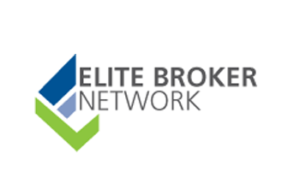Architect & Engineering Strategies for Getting Paid On Time
Many architects and engineers don’t like to talk about money. This isn’t to say that architects aren’t good business people; it’s just that money typically is not the reason an architect or engineer is drawn to their career; it’s about design. However, your clients – owners, developers, institutions, and corporations – are used to discussing money on a daily basis. And in some ways, this can give them an edge over you when you are trying to get paid for your services.
As we all know, time is money. And the longer you wait to pursue a delinquent payment, the less likely it is that you will ever get paid. The longer the debt remains unpaid, the greater the chance that your delinquent client will discount the value of your services and leave you high and dry. For example, the owner of a building in Philadelphia owed an architect $600,000.00 in unpaid fees. The architect avoided the conversation about the unpaid fees for several months. Finally, when they brought up the issue, the owner wanted to negotiate the fee at a significantly lower amount. The architect sued the owner, but the owner counter-sued, claiming that the architect’s documents were consistently late, delayed the project, and the final design was unsuitable for construction. Ultimately, the architect spent $250,000.00 in litigation and won only $300,000.00, resulting in a mere $50,000.00 net profit, not to mention the waste of time, effort, and attention to the lawsuit. If the architect had put certain processes in place at the beginning of the project and had maintained communication regarding payment, much expense and frustration could have been avoided.
Creating and following a clear plan for getting paid is essential for your firm to thrive. Here are some things to remember when you’re developing your plan:
Control Your Cash Flow
Controlling your cash flow is not a one-time “event”; it’s an ongoing process. Getting paid on time is essential to maintaining cash flow. The longer you wait before addressing payment, the more risk you incur and the less profitable you become. This can happen virtually overnight. It’s important to be vigilant about payment standards and schedules.
Establish A Relationship With Accounts Payable
At the kick-off meeting, make sure you meet the person who’s going to pay the bills. This is rarely the owners themselves or the owners’ rep, so make sure that this person is going to be at the kick-off meeting. Don’t be shy; ask that the accounts payable manager attend, and if that’s not possible, make sure you set up an appointment to meet them in person. Learn their name and direct phone number. Do the same with the person in charge of approving payments. Next, discuss their billing cycle and find out when the owner pays their bills. Make sure to align your billing with the owner’s payment cycle and set your payment due dates accordingly. Have a conversation about what they want the bill to look like, what format, and how they want to see the data presented. If you present the bill to them in the way they define it, they can’t claim to misunderstand it later on. Finally, show them a sample bill based on your conversation and have them approve it. It’s important to understand that this experience need not be contentious. On the contrary, developing relationships with the people who are in charge of payment actually helps you avoid conflict down the road.
Define And Enforce Clear Payment Terms
Make sure you thoroughly review the contract for all language concerning payment terms. Are the terms clear? Are they based on standard AIA contracts? It’s important to have your legal counsel review all contracts, especially non-standard contracts. Next, create a sense of transparency about your billing process and getting paid. Let the owner know in no uncertain terms exactly what you expect regarding fees, terms of payment, and the payment schedule.
Maintain Communication About Payment Status
Most contracts state 30 days as the standard schedule for payment. However, the industry average is 82 days because many firms are not proactive about enforcing payment schedules. It’s critical that you don’t let any bill go unpaid past 45 days. If the payment is late over 30 days, you must mention it to the owner and to their accounts payable. One effective strategy to help with this is by meshing your project manager’s conversations about payment status with those about the status of the project itself. If the payment is late, then that fact must be discussed when discussing ongoing project updates. Should the payment go over 90 days, the firm principal must step in, and all work must stop – make sure that work suspension and termination language are clearly laid out in your contract. It’s nearly impossible to stop a runaway train once it’s out of control. But if you develop strong relationships, clearly define your expectations upfront, enforce your payment terms, and maintain clear communication, you won’t be derailed by late payments in the first place.
Every firm is different; consult with your legal advisor and professional liability agent to develop a plan that’s right for you. About the Author: Steve Whitehorn is the author of the upcoming book, Ensuring Your Firm’s Legacy and Managing Principal of Whitehorn Financial Group, Inc. The firm is the creator of The A/E Empowerment Program, which helps firms create a more significant legacy and empowers them to achieve greater impact on their projects, relationships, and communities.


